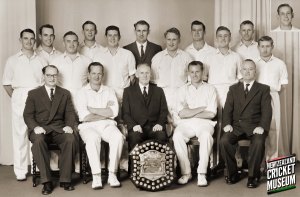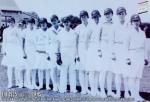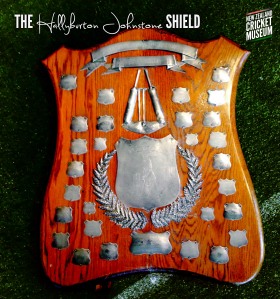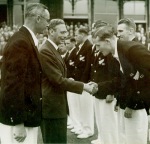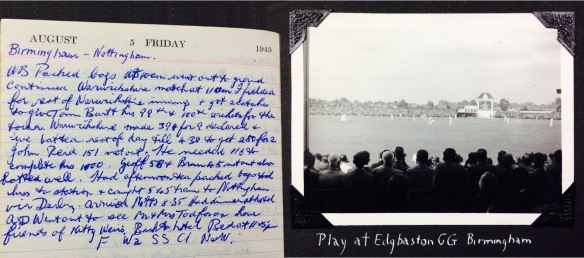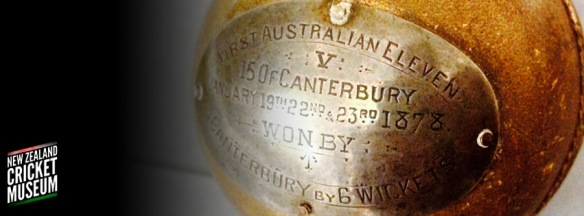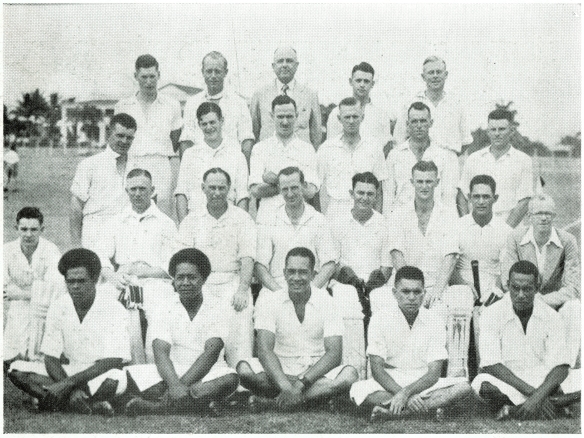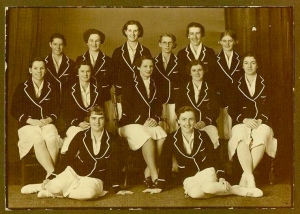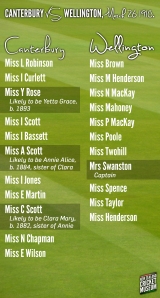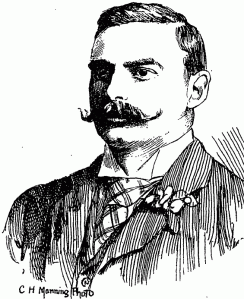I n New Zealand cricket’s recent announcement of the Plunket Shield schedule for the 2014-15 season, they also unveiled a new logo for the competition. While they were developing this logo, the New Zealand Cricket Museum was asked to provide some historical information on the Shield to help inform, and hopefully inspire, the design. We’re not design critics, so we’re not here to pass judgement on the final logo, although we do think it’s a tidy nod to the heritage of New Zealand’s premiere cricket trophy. A heritage we think is worth exploring a little more.
n New Zealand cricket’s recent announcement of the Plunket Shield schedule for the 2014-15 season, they also unveiled a new logo for the competition. While they were developing this logo, the New Zealand Cricket Museum was asked to provide some historical information on the Shield to help inform, and hopefully inspire, the design. We’re not design critics, so we’re not here to pass judgement on the final logo, although we do think it’s a tidy nod to the heritage of New Zealand’s premiere cricket trophy. A heritage we think is worth exploring a little more.
Lord William Lee Plunket was the 5th Baron Plunket and the 12th man to serve as Governor of New Zealand once we became a self-governing colony. His tenure as Governor of New Zealand began in 1904 and immediately followed the Earl of Ranfurly’s term in the role. Ranfurly is perhaps best remembered today by the Ranfurly Shield, the trophy he donated in 1902 for the nation’s provinces to play for on the rugby field under a challenge system. Based on an unbeaten record during the 1902 season, Auckland were gifted the Ranfurly Shield and became its first holders. Strangely, their entire 1903 season was played away, meaning no teams had the opportunity to challenge for the Shield. In 1904, at their first attempt to defend it, Auckland promptly lost the Ranfurly Shield to Wellington.
Perhaps inspired by Ranfurly’s donation, Lord Plunket began his role as Governor of New Zealand by donating his own trophy; the Plunket Shield. Much like the Ranfurly Shield, the Plunket Shield was intended as a challenge trophy and was presented, initially, to the province with the best provincial record over the previous season. This wasn’t without controversy, however, as Auckland hadn’t played any provincial matches the previous season but had proved to be very tough opposition for the MCC team that toured. Auckland proposed that the MCC side were given the honour of selecting the Shield’s first holders. At a meeting of the New Zealand Cricket Council on May 15 1907, delegates spent some time debating the Shield’s first home with Canterbury eventually winning a vote by 11 to 6.
The Shield itself was completed early in 1907 and toured around the country with the Governor before being taken to the New Zealand Cricket Council for their decision on the first holder. The Shield features a silver shield with the Plunket family crest and motto at the top and relief images of a cricketer, cabbage tree and fern. It also has engravings, described at the time as being, of “Maori figures and characteristic scrolls”. Originally mounted on a cedar backing with 22 shields, this backing was exchanged for a larger timber backing sometime after 1930. By the 1970s, the Shield had grown even further with another layer of timber added – this is the Plunket Shield as it appears today. The shape of the silhouetted shield in New Zealand Cricket’s new logo references the shape of the Plunket Shield’s silver centrepiece while the Plunket family crest features prominently.
Just as it was with the Ranfurly Shield, the team given the honour of being the inaugural holders lost the Shield at the first challenge. In this case, Auckland gained some revenge, and perhaps proved they should have been the first holders, when they travelled down to Lancaster Park and claimed a resounding innings and 135-run win.
From that first challenge match in 1907, the Plunket Shield bounced back-and-forth between Canterbury and Auckland until 1920-21, when Wellington won it for the first time. The following season, the Plunket Shield format switched to a points’ competition and returned to Auckland. Since then, the points’ format has remained, although the Plunket Shield did have a period (1974-75 to 2008-09) where sponsor’s trophies won the day and it was retired to the New Zealand Cricket Museum. During that time it was also, twice, the trophy played for in the North v. South one day match. Thankfully it is back in its rightful place on the field and, with this new logo celebrating its heritage, it seems the Plunket Shield is here to stay as New Zealand cricket’s major trophy.

